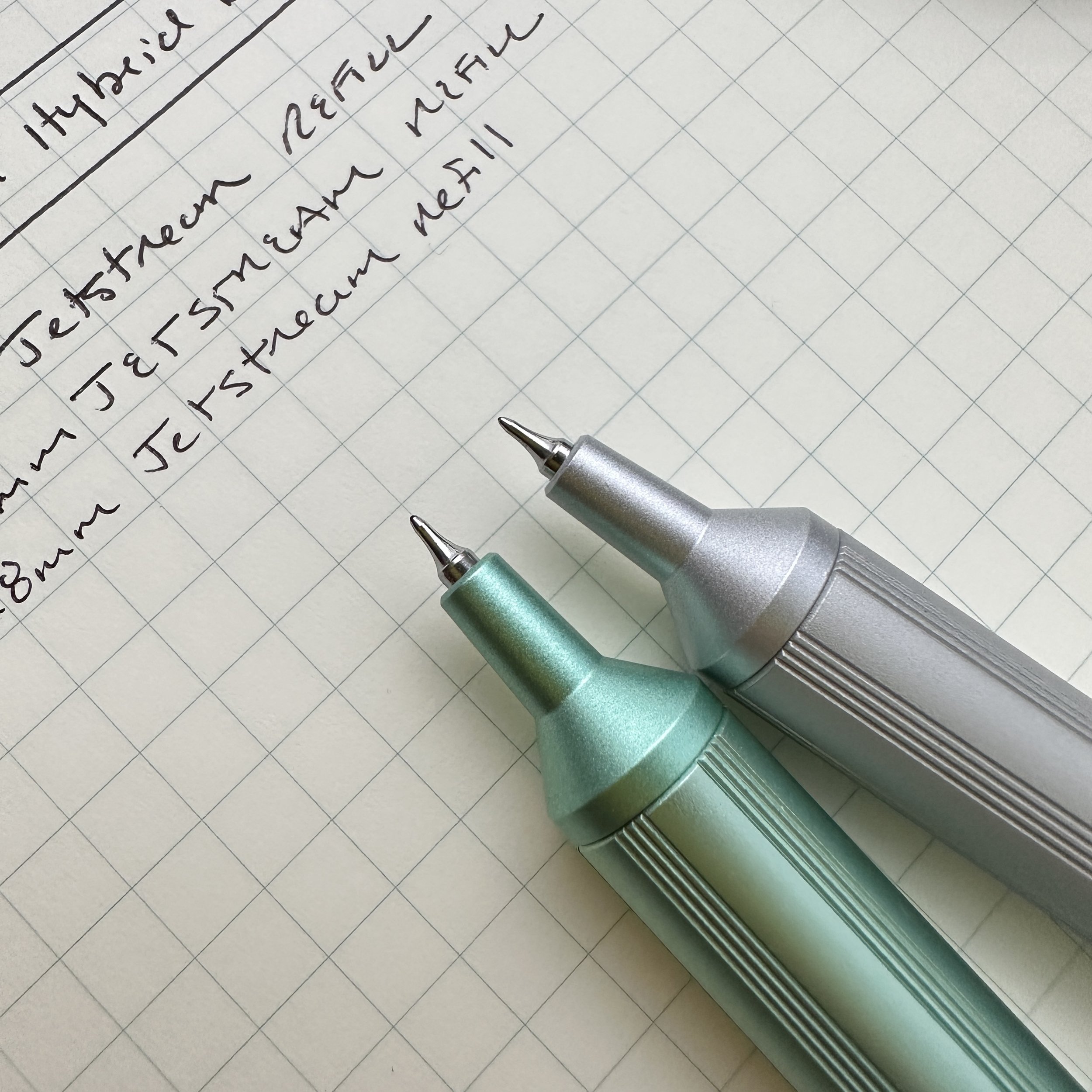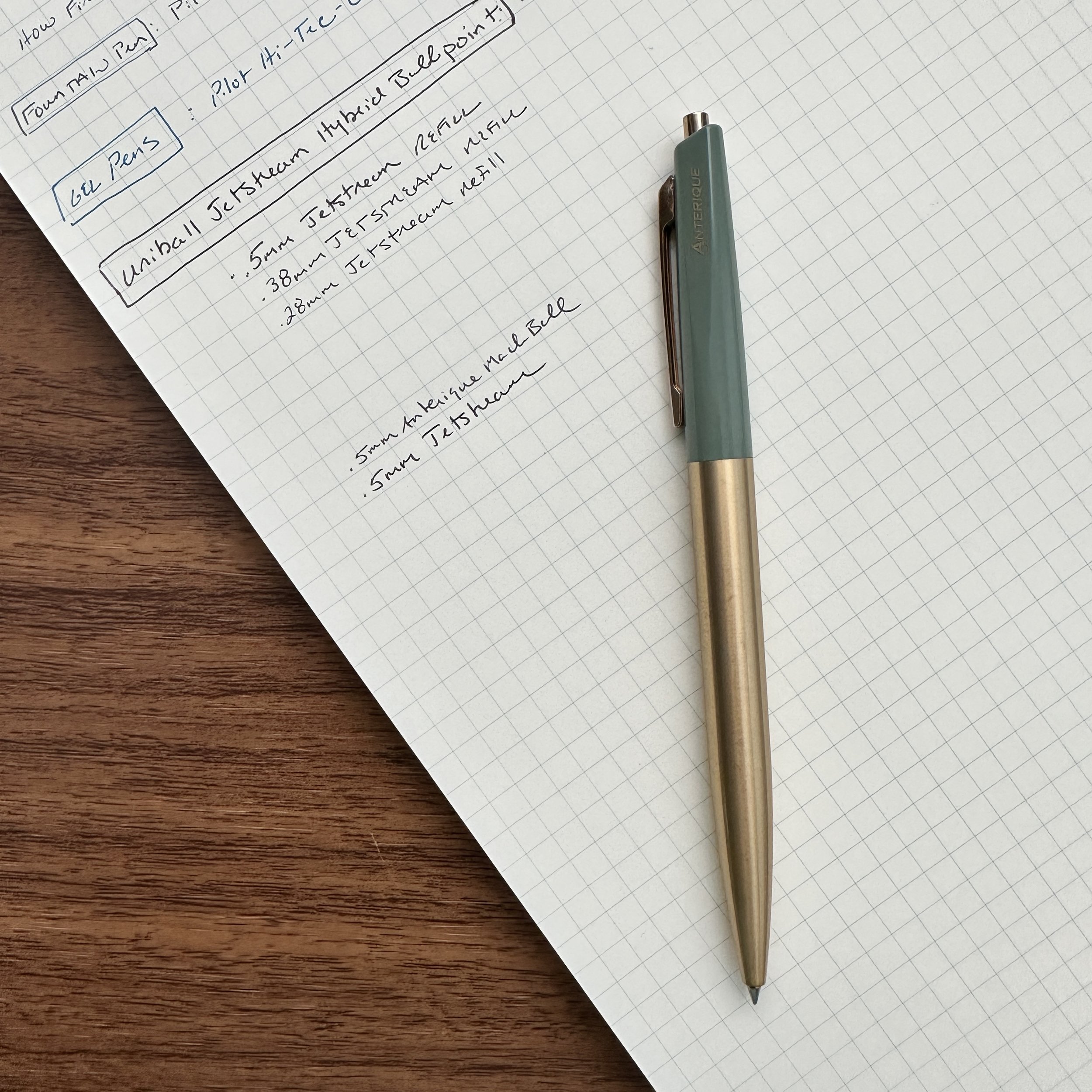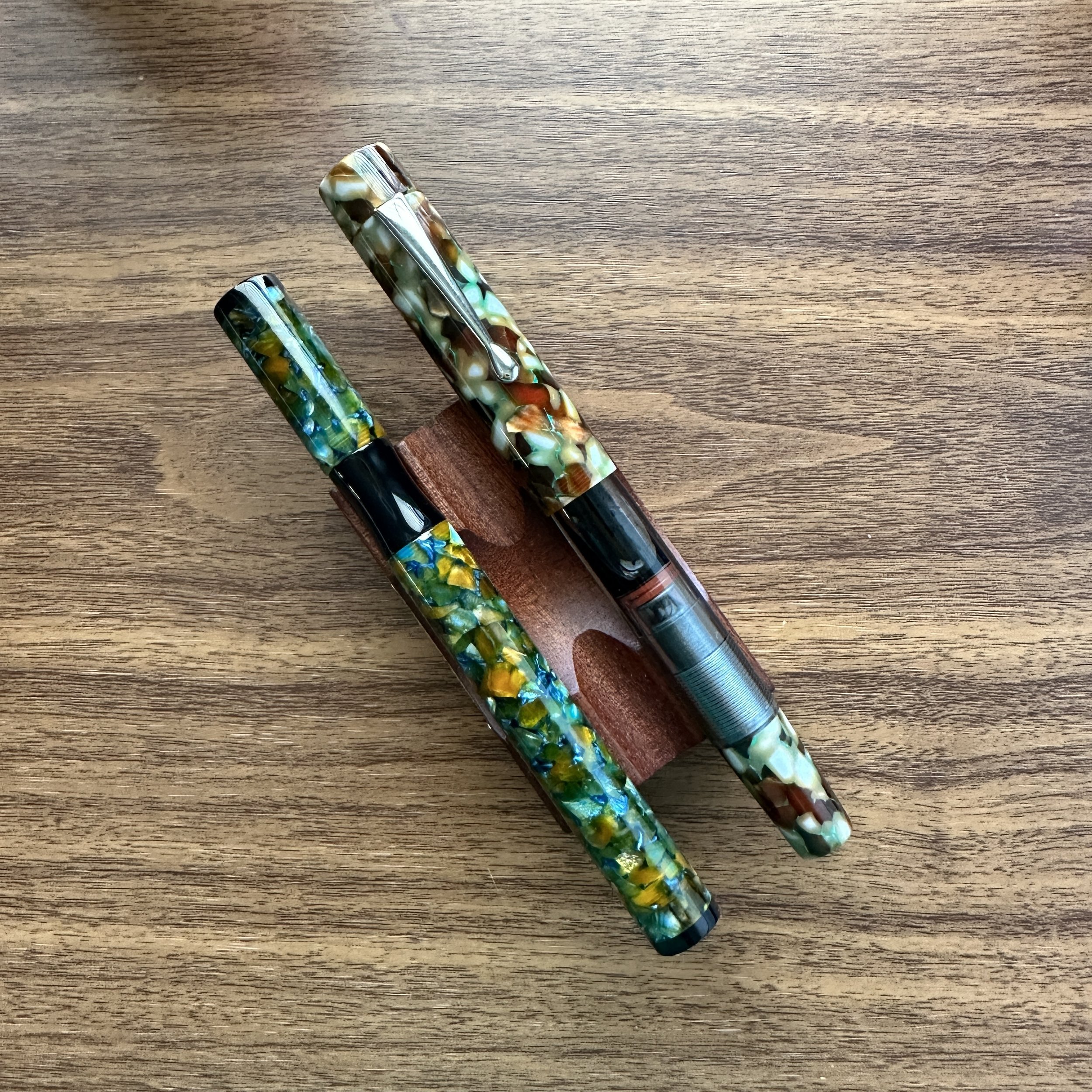Pocket fountain pens are hard to get right. For starters, it’s extremely difficult to design a pocket fountain pen that works for for a broad swath of the market, because once you start reducing the size and weight of the pen to so-called “pocket-sized” you limit the number of people who can use it. On the other hand, if you make a “pocket” fountain pen too big, it may no longer be truly “pocketable.”
Wingback is a UK-based designer/manufacturer of writing instruments and personal accessories, and I’ve previously reviewed their Mechanical Pencil that won a 2023 Red Dot design award. A hallmark of Wingback’s design is their ability to avoid the pitfalls of so many manufacturers who attempt to work with heavier materials such as brass and stainless steel, by striking a near-perfect balance of width, length, and weight. I now have a full set of the Wingback writing instruments - Mechanical Pencil, Mechanical Pen, and Fountain Pen - and all of them are exceptionally useable in addition to being beautiful design pieces.
The Wingback Fountain Pen in stainless steel, shown next to the Wingback Mechanical Pen in black stainless steel. Both come with a nice cotton sleeve that you can use for pocket carry. I plan to review the Mechanical Pen in the near future.
The Wingback Fountain Pen, which recently launched on Kickstarter, adopts the cylindrical profile that’s probably familiar to many pocket pen enthusiasts, but in a size that’s somewhat uncommon and, in my opinion, fills a need in the market. For example, I loved the idea of the Kaweco Liliput, but that particular pen ultimately ended up being too small for anything more than quick notes. I’d place the Wingback Fountain Pen between the Liliput and the larger Kaweco Supra size-wise, which could be a sweet spot for those who love this type of design but have had a hard time finding a pocket pen that balances well in their hand.
The Wingback Fountain Pen adopts a minimal, streamlined design with no branding other than the subtle “Wingback” engraved on the cap. Diamond knurling is perfectly centered on the barrel when the pen is capped, and well-executed in the sense that it’s comfortable to hold this pen for long periods of time. (More on that below.) Finally, both ends of the section feature an o-ring on the threads, which protects the user from any ink leakage and prevents the nib from drying out. Interestingly, Wingback implies that this pen can be eyedroppered, stating that with the o-ring, “you can convert the pen’s chamber within its body into a reservoir for your ink of choice,” and that “we have tested and approved the stainless steel for corrosion resistance to inks, and are currently testing brass and titanium in longer long term trials.” I don’t personally eyedropper metal pens, but I do know people who have done so without incident, and as long as the metal resists corrosion long-term you should be fine. I lump this one under the header of “proceed at your own risk.”
Three of the four finishes. Sorry, I don’t have an example of the titanium (yet).
The Wingback Fountain Pen is available in four materials/finishes to start: stainless steel (pictured here), brass, tungsten-carbide coated black stainless steel, and titanium. Custom laser engraving of up to 50 characters is also available, if you would like to personalize your pen.
Nib and Overall Writing Experience
The Wingback Fountain Pen uses a standard Bock 076 stainless steel nib, and the one I received (a fine?) arrived perfectly tuned. According to the Wingback Kickstarter page, five standard nib options will be available, including extra-fine, fine, medium, broad, or double/extra-broad. I would consider the Wingback a pure cartridge pen - while one of the mini converters from Kaweco or Monteverde might fit, those don’t hold much ink and you’re likely better off refilling a standard short international cartridge via syringe if ink choice is important to you.
The Wingback Fountain Pen measures 95mm unposted / 135mm posted.
Though I personally find them well-balanced, some have remarked that the Wingback Mechanical Pencil and Mechanical Pen are a touch short. The Wingback Fountain Pen is indeed quite short unposted, but offers a workaround since the cap posts, much like the Schon DSGN Pocket Six or the aforementioned Liliput. While the Wingback Fountain Pen might be just long enough to jot quick notes unposted, longer writing sessions will probably require posting the cap unless you have very small hands.
I’ve been using the Wingback Fountain Pen for the past two weeks, and haven’t experienced any of the hand fatigue that sometimes comes with machined metal pens of this weight. The knurled grip eliminates any slippage, while remaining subtle enough not to hurt your fingers. This pen will stay in my pocket pen rotation, and I’m considering whether to back the Kickstarter for a Black Steel or Titanium version.
Read More on Pocket Writing at T.G.S.
I jumped at the chance to review this pen because pocket pens (and pocket fountain pens) are what I consider to be one of the last categories where there is a lot of room for innovation. As fountain pens become more mainstream, enthusiasts want to be able to carry their writing instrument of choice everywhere they go, which has led to an explosion of more compact, pocket-sized options over the years. I periodically update the site’s “Guide to Top Pocket Pens”, and once the Wingback Fountain Pen is released, I see a clear path to that pen being prominently featured on that list.
The Wingback Fountain Pen shown with, from left, the Schon DSGN Pocket 6, TWSBI Mini in White + Rose Gold, the Kaweco AL Sport in Red, the Kaweco Supra in Stainless Steel, and the Schon DSGN Full-Sized Metal Fountain Pen.
Details on How to Get the Wingback Fountain Pen
As of the date of publication of this post (September 16, 2023), you have 19 days remaining to back the Wingback Fountain Pen on Kickstarter. While pledges are listed in £, they start at around $120 (which may fluctuate a bit due to the exchange rate). Wingback estimates that this will represent a 25% discount off the eventual retail price, which seems about right since both the standard versions of the Mechanical Pencil and the Mechanical Pen currently retail for around $158 USD.
Yes, for those of you who will ask, the Wingback Fountain Pen does fit in the Plotter Pen Holder!
Wingback is a company with a long track record of successful Kickstarters, so I have no concern about backing this one, but anyone considering backing a crowdfunded a project should of course be aware that Kickstarter offers no guarantee of timely delivery (or of any delivery, for that matter). Projects do hit delays, and by funding a project you are supporting the project itself, as opposed to “purchasing” a unit. That said, this project already has raised nearly $78,000 of its $2,500 funding goal, so I wouldn’t anticipate any issues here.
Disclaimer: Wingback sent me the Wingback Fountain Pen pictured here for review purposes, free of charge. T.G.S. has not otherwise been compensated for this review and is not being paid for referrals or advertising. T.G.S. is supported financially via purchases from the T.G.S. Curated Shop and pledges via the T.G.S. Patreon Program.



